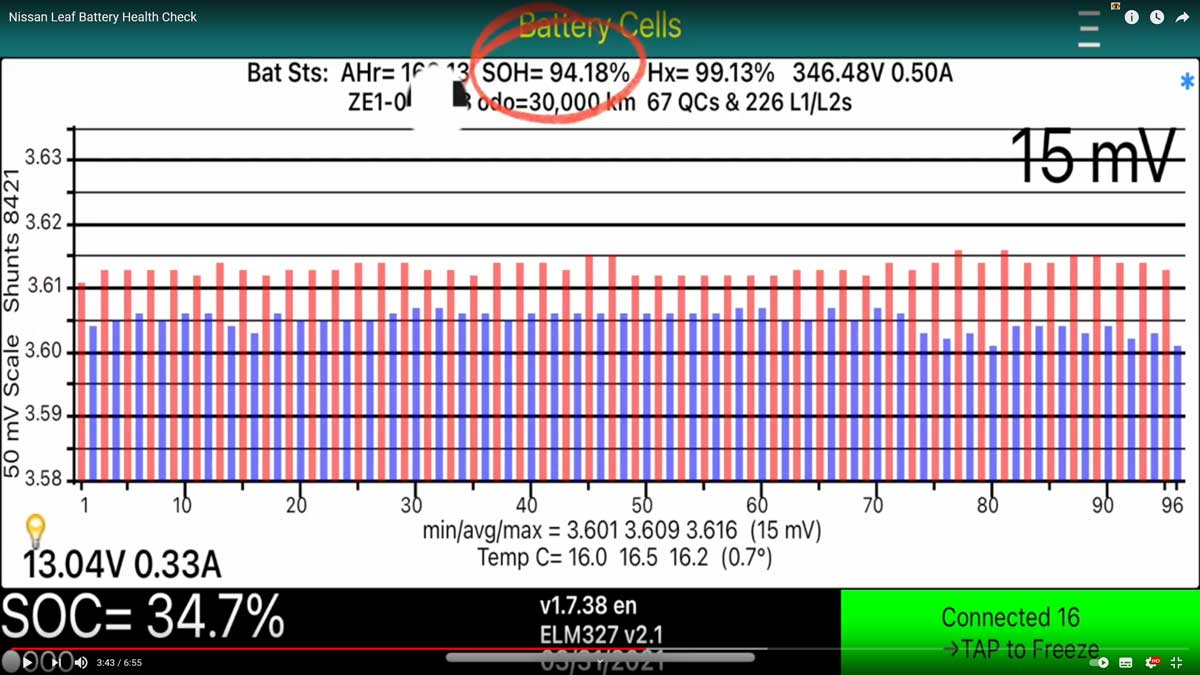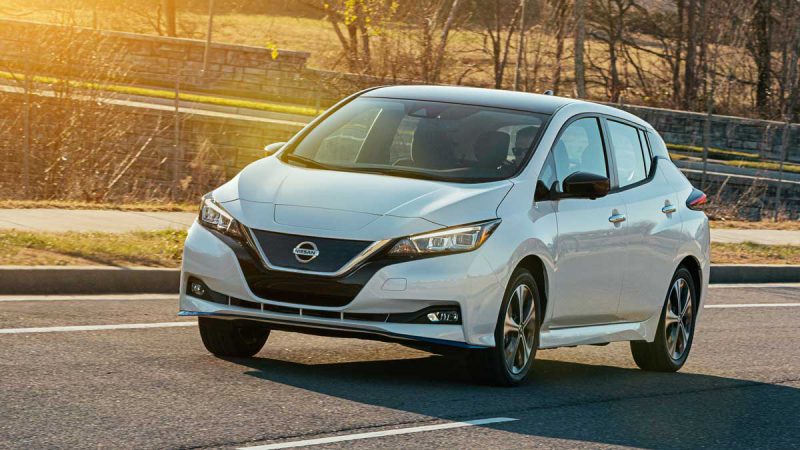The owners of the first Nissan Leaf e+ to be registered on Australian shores say its battery has passed its two-year health check with flying colours, and have shared how other owners can check on their own vehicles.
The Leaf e+ will shortly be available in Australia new and will be another valuable addition to the fledgling Australian EV market as it is the long-range version of the popular Japanese electric mainstay, the Nissan Leaf, offering 385km driving range new according to the WLTP cycle.
This particular vehicle is a “grey import” bought via auction from Japan by Canberra couple Karen and Shane Maher in 2020 under special vehicle import laws.
Nissan copped some criticism for its decision to go down the passively-cooled battery route with the Leaf e+, as early model Leafs were plagued with early battery degradation issues, a problem that was reported as worse in countries with warmer climates such as Australia.
The Nissan Ariya electric crossover will be the first electric car from the company that uses liquid-cooled technology, so it seems clear that Nissan knows it needs to go down this route to stay competitive.
Nevertheless, according to the Mahers, their vehicle has only seen minimal degradation in its two years’ life. While this may only be one vehicle, it’s worth understanding how to check the Nissan Leaf e+ if considering importing one, or just to keep an eye on your new Leaf’s state of health.
In their latest video via their Youtube channel EV4ME, Shane Maher breaks down how he has used the Leafspy app to evaluate the state of health.
The Leaf e+ drive battery consists of 288 lithium-ion cells, in 96 battery modules, and weighs roughly 450 kilograms in weight. Although rated for 385km, its driving range is about 360km in ideal conditions, but more real-world figures around 300km, Shane says.
“We analyse the drive battery on the Nissan Leaf with a little application on the iPhone called Leafsp,” says Shane. “Leafspy connects to the car’s computer by a little wireless dongle that connects …. just under the driver steering wheel.

The most important page is the battery cell information page, he says. “Each of these columns represents a battery module, which consists of three cells. So 96 modules with three cells each equal 288 cells in total in the drive battery.”
“On the horizontal scale, we have the number of modules which is 96. As stated before, the vertical scale is the module voltage which is about 3.6 volts, in this case, the state of health of this battery is 94.18%.
“Far from dead as our critics would have you believe,” he says.
“This drive battery has degraded a little bit over 5% for two years, and 30,000 kilometres, which is pretty good for a drive battery with no active cooling capability.”
So how does this affect range?
“Because the battery is degraded by a little bit over 5%, we would have lost between 15 to 20 kilometres from a car that’s brand new,” he says.
“Traditionally, these drive batteries degrade quite quickly, in the first five to 10% of their life. But after that, they degrade at a much slower rate over time. So in about six to seven years, our state of health of the battery could drop down to 80%, depending on how well we treat the battery.
“So even if this electric vehicle is 15 years old, and the standard health of a battery had dropped to 50%, it would give us a range of roughly 160 to 180 kilometres. And it’s still a useful car you can drive around town, go shopping, pick up the kids, whatever. But at the end of the day, you don’t have to replace that drive battery.”
Shane notes that the difference in voltage between cells also indicated the battery’s health.
“The number here in the top right is the difference between the lowest and the highest module voltage. So in this case, it is 15 millivolts. So this drive battery is well balanced. Anything under 30 millivolts is pretty good. Let’s say you have a difference of 322 millivolts, your drive actually has big problems.”
And he has one last tip.
“Everyone wants a warranty with their electric vehicle drive battery is a better idea. Why don’t you get a Leafspy report, and then you can actually see the numbers yourself and make your own judgement. It only makes sense.”

Bridie Schmidt is associate editor for The Driven, sister site of Renew Economy. She has been writing about electric vehicles since 2018, and has a keen interest in the role that zero-emissions transport has to play in sustainability. She has participated in podcasts such as Download This Show with Marc Fennell and Shirtloads of Science with Karl Kruszelnicki and is co-organiser of the Northern Rivers Electric Vehicle Forum. Bridie also owns a Tesla Model Y and has it available for hire on evee.com.au.

